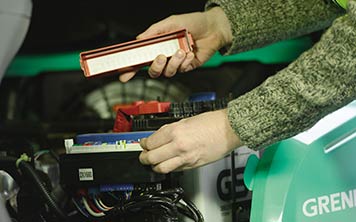Call Our Experts On:
Over time, you’ll find that employees become dissatisfied with the way it runs, especially if it’s worn or exceptionally slow. The more difficult it is to operate, the more frustrated your staff will get, no matter how well trained or experienced they are.
So to avoid the unnecessary problems that were mentioned previously, it’s of the utmost importance that you know when it’s time to replace your material handling equipment. Whether it’s a worn-out forklift, a reach truck or an order picker, you can apply all of this to a wide range of warehouse machinery – helping further when it comes to smooth-running warehouse operations.
But there are some things you can do to elongate the lift of your machines and we’ll be outlining those tips for you in this article. But how can you spot the signs that your forklift needs replacing and should you put plans in place for when that time, eventually, comes? Charnwood Lift Trucks is on hand to explain.
For operators, and those on the warehouse floor, to be as safe and secure as possible when on your premises, it’s imperative that your employees are properly trained and have a license to drive forklifts and other types of warehouse equipment.
Depending on whether it’s an electric forklift, an LP gas forklift or a diesel forklift, there might be other training sessions that need to be completed, so bear this in mind if you’re looking to train new staff or retrain your existing employees.
Although many think that there might not be a proper way to charge an electric forklift, there actually is and it’s important that you follow the rules when it comes to charging your electric forklift so as to ensure it remains fully-functional for as long as possible, regardless of whether it’s new or used.
Here’s everything you should keep in mind when charging your electric forklift:
Keeping the battery as clean as possible, regardless of how old it is, can ensure the forklift runs for as long as possible. There are certain things you can do to ensure it remains in excellent condition, even if it’s second-hand, and those include:
Replacing a forklift, especially if it’s brand new, can cost a pretty penny, so it’s important that you understand exactly how much cash you could be parting with to replace your crucial piece of machinery. In terms of determining how many more hours of service a forklift could give you, you should think about how many years you’ve had it already – many continue to work for decades whereas others could burn out within a few years.
If you’re now finding that you’ve spent more on it to repair the forklift that you would like, then it might well be time to consider purchasing a replacement forklift. It doesn’t have to be like-for-like, either, which allows for more flexibility and versatility further down the line. For example, if you have a diesel forklift that needs replacing, it gives you the perfect opportunity to switch to a more eco-friendly solution, like an electric forklift or an LP gas forklift.
To help determine how long you’ve got before a replacement piece of equipment is due, you should consider the following factors:
Aside from answering the aforementioned questions, there are a number of different signs to look out for if you think your forklift needs replacing. This will help to solidify any thoughts you have about swapping out your old, worn machine for a robust, high-quality alternative, whether it’s a brand new forklift or a used machine.
Some of the signs you should be looking out for which will help you to make that final choose include looking for:
One of the best things you can do when acquiring a forklift is to estimate how long you’ve got before the forklift breaks down. You’ll be able to find some information about this in the manufacturer’s handbook. Although most forklifts last for around 10,000 to 12,000 hours on average, it does vary based on how well you look after the machine in question.
If you know that your machine is getting slower, older and is generally becoming unreliable, then it’s worth taking out some insurance if you don’t have any cover already. You should also look at starting to put some money away to cover the cost of a replacement forklift.

Charnwood Lift Truck Services are one of the leading Mitsubishi Forklift dealers operating in the Midlands.
If you have any questions about our products and services please contact us.
